Interview with ILOEMA founders
Her creations are tablecloths, napkins and embroidered fabrics, but also sculptures and limited edition jewel-pieces that have made the pages of the New York Times twice. We chatted with them at El Invernadero about their textile craft project.
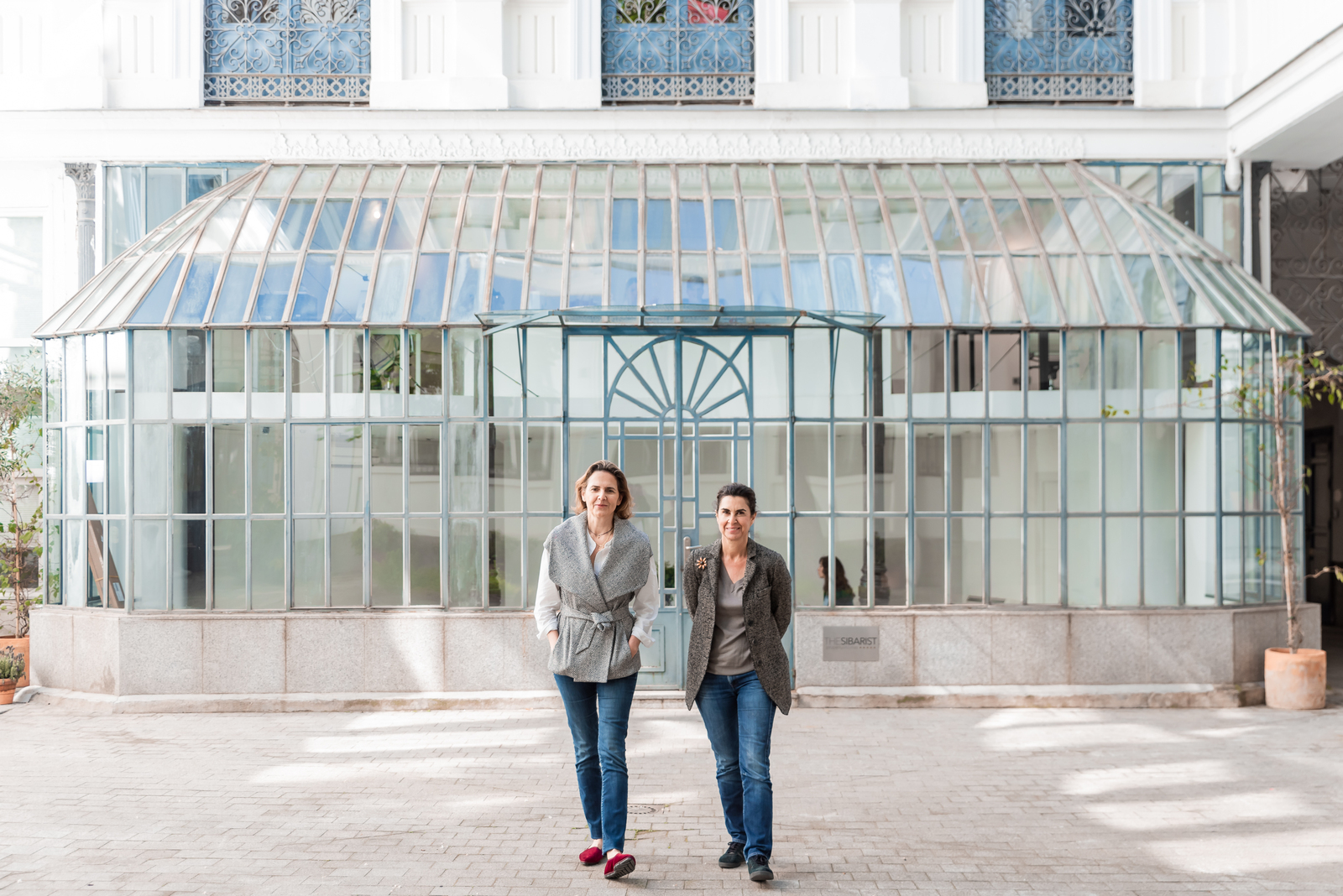
Far from seeking stardom, ILOEMA’s commitment is to value and publicize the textile wealth that is made in Spain, the embroidery that has accompanied several generations. To celebrate its fifth anniversary, ILOEMA returns to combine art and craftsmanship and does so by going back to the beginning in 2019 with the first artist they worked with on that occasion, Antonio Ballester Moreno, and in collaboration with the Royal Tapestry Factory, “one of the international benchmarks in the textile world,” say Silvia Delgado de Torres and Teresa Muñoz-Rojas, its founders.
What is the origin of your project?
Teresa: It arises from our concern when we see that the crafts, the artisans’ workshops, are being lost, in many cases because there is no generational replacement. In the case of the world of embroidery and textile crafts, there are some techniques that are not being lost and are still being carried out in wonderful workshops that are still active. This is the case of gold embroidery which, thanks to the brotherhoods and brotherhoods and the importance of Holy Week, continue to attract young people.
However, many other techniques are being irrecoverably lost. That is why we thought of a formula that, taking as its origin the techniques and embroiderers that exist in different parts of Spain, we could unite them with contemporary artists. The objective: to return to what used to happen in the past, when art and crafts were on a par.
It is true that the craftsmanship of the artisan is becoming more and more valued, but even so, there was a time when both were on a par.
Silvia: In Teresa’s environment as well as in mine, Spanish craftsmanship is very present in our education and in our home. For us to begin to make our journey, is the result of our concern to see that trades were ending. And that is also the end of an important part of our culture.
What was that journey like?
At a vital moment in our lives, we decided to apply our professional experience and training to create ILOEMA, a project with the aim of updating, valuing and dignifying textile crafts in Spain. We found that there was great ignorance of what is done in your city, in your province and in your country. That’s why we came up with the idea of making meetings with artists that resulted in limited editions of pieces for home, where we play the role of editors or as they say in English curators.

Where did you put the focus?
To make each collection we first think about what kind of embroidery or weaving technique we want to show and in the first edition we looked at what is done in the villages of Toledo. Specifically in Lagartera and all the surrounding villages. From there we began the search for the artist who we believe best dialogues with this technique, with its iconography. It is very important that the artist physically moves to the place where it is made and gets to know the technique so that there is a dialogue and exchange between him and the textile artisans.
What challenges do you face?
Many times, drawing on paper or ceramics does not work when transferred to embroidery. The challenge is to see with the embroiderers which is going to be the best technique to reflect the artist’s work, which stitches, which techniques… In this sense, for us it is very important to place the artisan and the artist at the same level. It does not consist of the artist deciding the work and the artisan executing it directly, but rather we want there to be an exchange and for the embroiderer himself to decide the best way to do it. It is the challenge that both feel reflected in each piece.
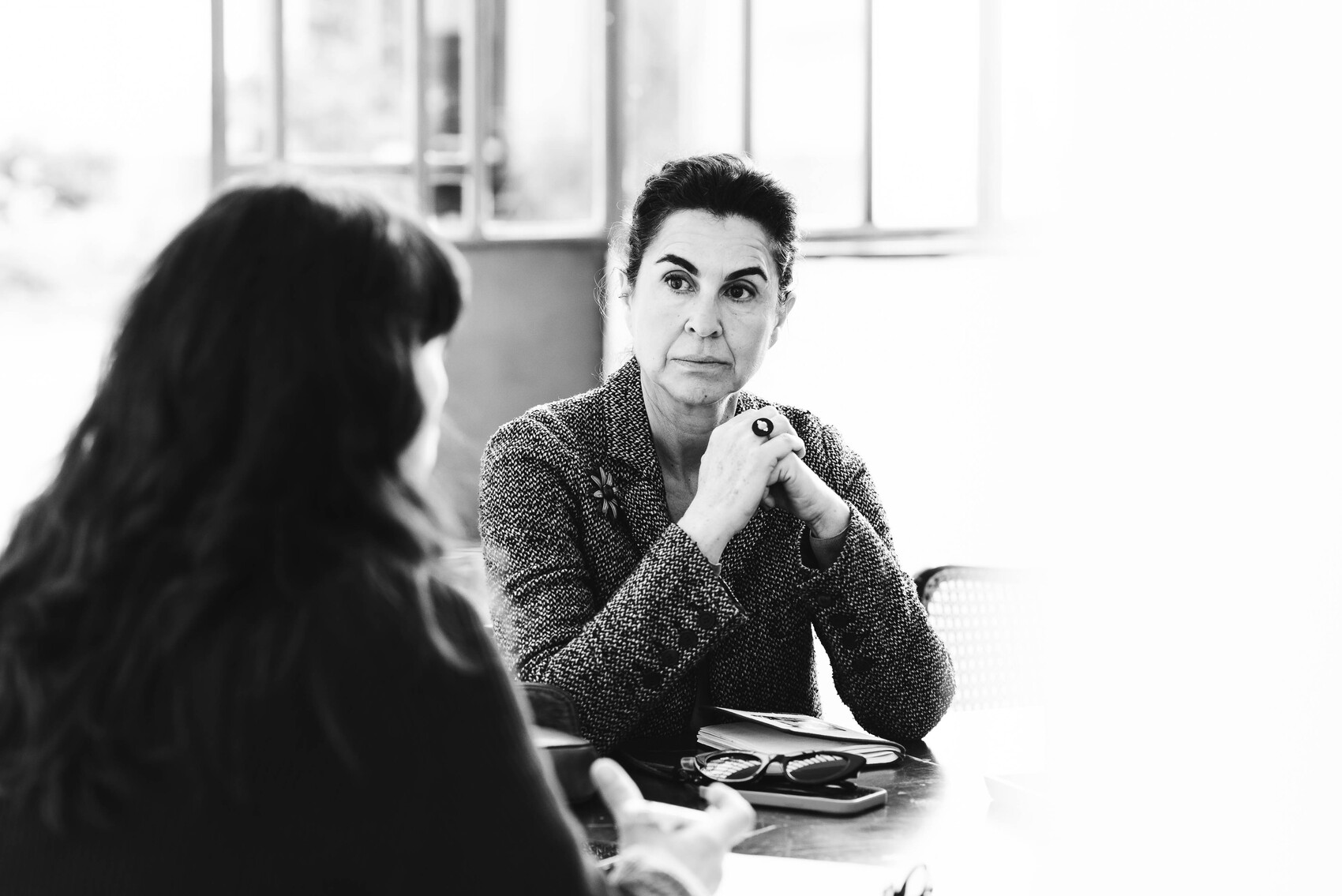

What is the significance of the latest work you have just presented?
In the case of the artist Antonio Ballester Moreno, this latest collaboration with the Royal Tapestry Factory (RFT) has been a very important milestone for us, which is that it has been done with a new technique. We had been wanting to work with both for a long time and we were very clear that the pieces were the poufs and the ottoman table but also the texture of the tapestry we were looking for. It is neither that of the tapestry nor that of the rug but a mixture of both.
How was it resolved in this case?
Both the craftsmen and the artist have stepped out of their comfort zone. In this case the RFT has developed a new technique that they have not done in its 303 years of history. It consists of a hybrid of tapestry and carpet resulting in a kilim-like texture with the complexity of the tapestry technique, but using the wool of the carpet.
Has this happened in previous projects?
Not in this way. But it is true that our proposal is to get everyone out of their comfort zone. With gold embroidery, for example, we worked with Jesús Rosado’s workshop to create an ’embroidered’ sculpture with artist Blanca Muñoz. The result reflects an incredible level of mastery but also immediately identifies Blanca’s work.
What is the particularity of choosing these artists?
We never really work with artists who already work with the textile medium; our idea is that they come from other media, that they are ready for new challenges.
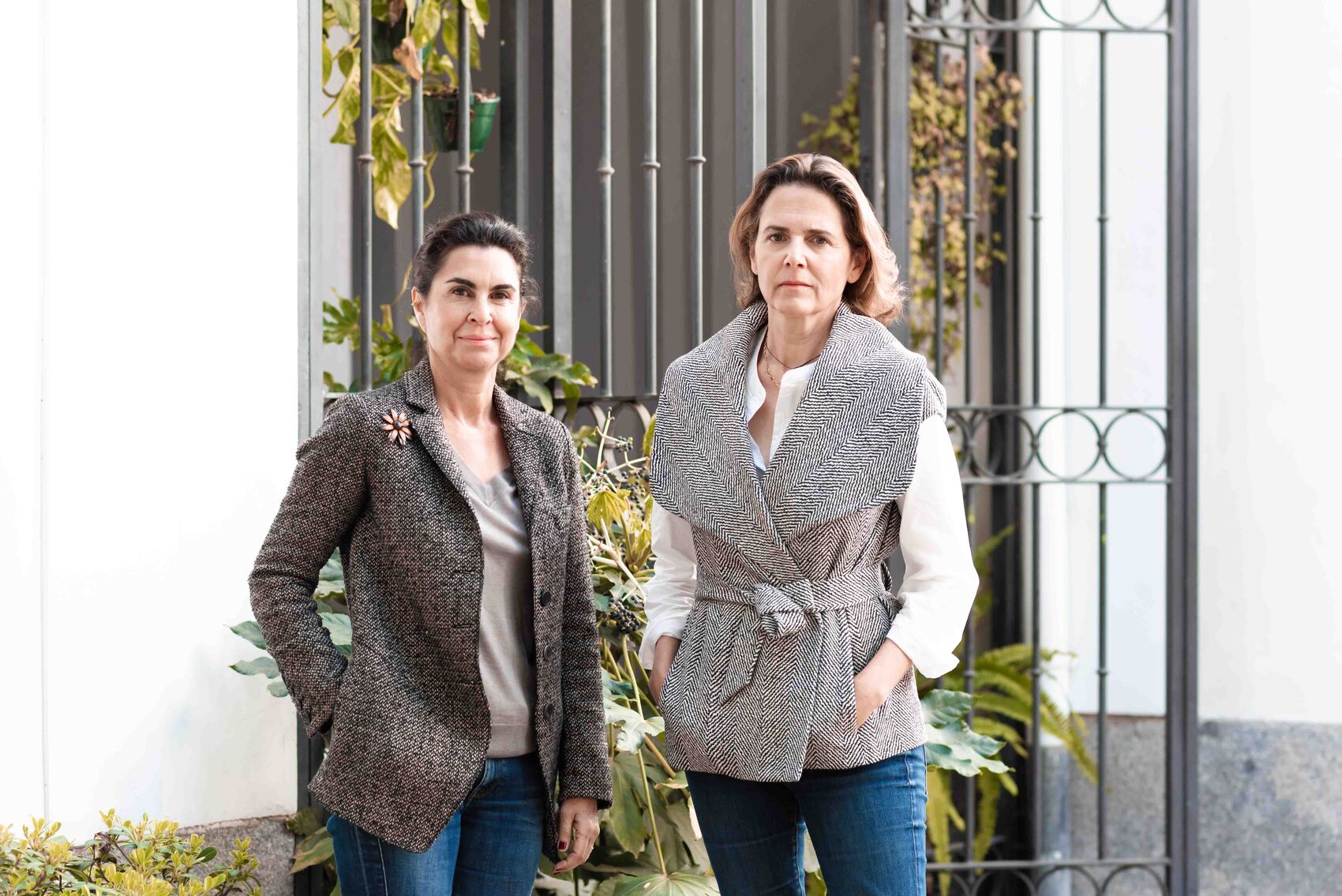
Where does the name ILOEMA come from?
From mixing the words thread and poem. The bird logo responds to the mythological story of Philomela, a woman raped by her brother-in-law Tereus who cuts out her tongue, locks her in a prison and leaves her for dead. To tell her sister Procne what happened, she embroiders the story on a canvas.
For us, embroideries are narratives. They have their own language that speaks a lot about the person who made it.
If you had to give a retrospective view, what would be the balance?
T: Positive because one of our struggles has been fulfilled: to highlight the problem of the artisan in Spain. For some years now there have been small advances in some places, but the fundamental problem remains, and that is that there is no generational replacement in many trades. Not only in textile crafts but in many other trades, and this is an issue that occurs both in Spain and abroad. We just met with a friend of ours who told us that in Mexico they have the same problem. For us it has been very enriching and a lot of fun.
S: We are fortunate to have been on this five-year journey and we are very happy, although we are moving at a slow but consistent pace. We would like to do more things but little by little. When we started we thought about where this path would take us… then we have been facing challenges and incredible responses from the people who have worked with us as well as from the artists. It fills us a lot because it doesn’t matter if it is an embroiderer from a village, a workshop in Ecija or the Royal Tapestry Factory, there is always a discovery, a challenge and always with an incredible response from all the people who have participated and who continue with us.
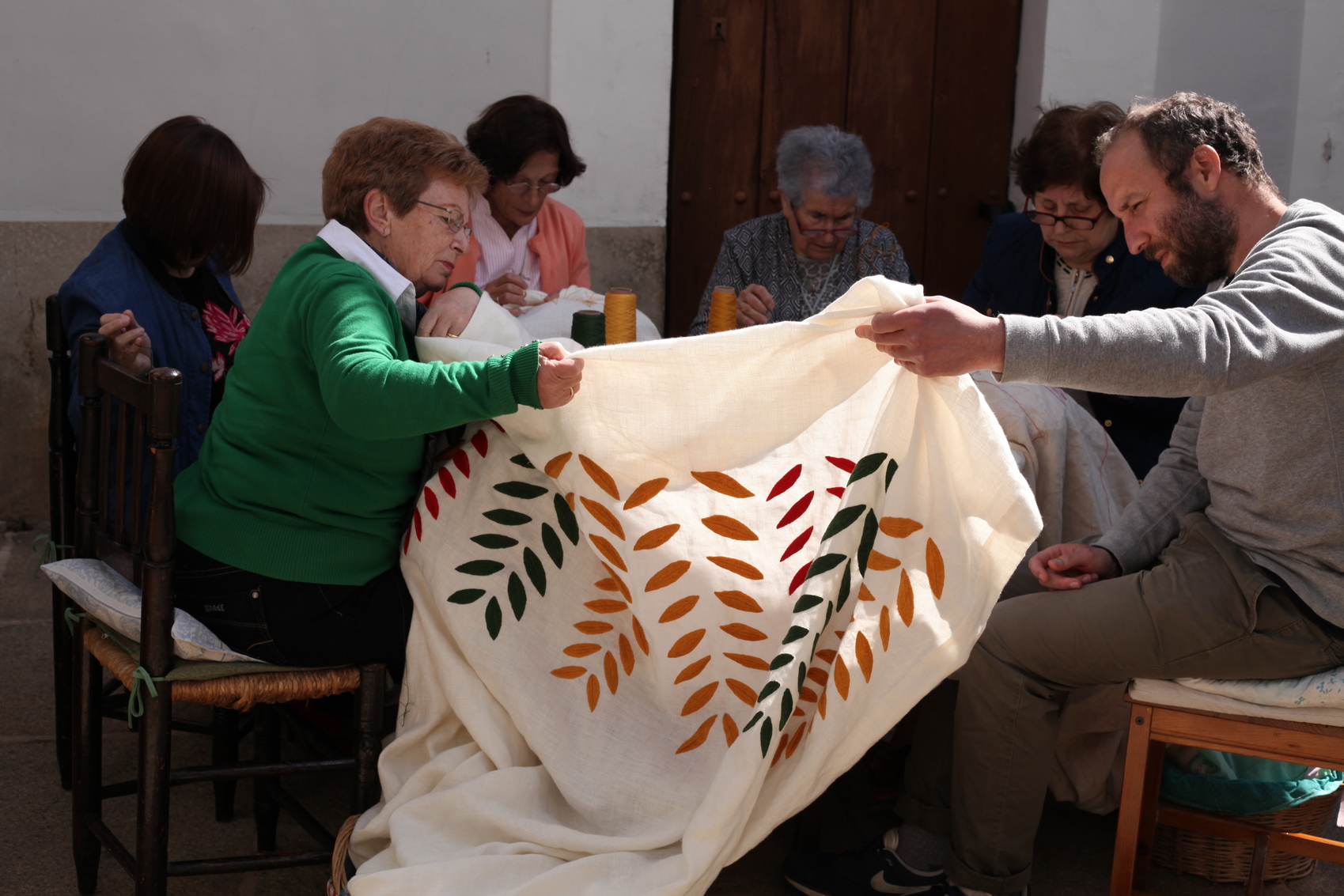
What is your proposal?
T: We have two lines of production that go hand in hand. On the one hand, limited editions with artists who give a lot of visibility to textile editions and then another line that is a rereading of the classics. In this case, we are the ones who think about which techniques and classic drawings we want to do, which colors and applied to which products (tablecloths, cushions, placemats, napkins…). By doing both lines in parallel, we are gradually bringing out different pieces, small collections always made to order and we try to make one collection a year.
What are the artist editions?
We have produced three collections with artists: the first with Antonio Ballester Moreno and the Toledo embroiderers representing the towns of Lagartera, Herreruela, Torrico and Navalcán; the second, with the sculptor Blanca Muñoz and the gold embroidery, which we worked on in Ecija with the workshop of Jesús Rosado and in Granada with José Manuel Martínez Hurtado (a screen and a sculpture); and in the third, on the occasion of the fifth anniversary, we have returned with Ballester Moreno and the Royal Tapestry Factory. An ottoman table and two poufs. It has just been in Milan as part of the exhibition of the Sociedad Artesanía Contemporánea SACo (Spanish Association of Contemporary Crafts) at the Palazzo Litta, on the occasion of the Milan Design Week.
What has changed in society regarding the valuation of crafts in general and textile crafts in particular?
T: Sometimes we have the feeling that there is a lot of talk. It is being promoted but perhaps it does not go to the focus of the problem, which is training. We help the artisan in business, in how he can promote his workshop and his work, but if he doesn’t have an apprentice to follow his work?
S: …Or, a school where he can acquire knowledge of the techniques that are made. But from passing over or two weeks… The learning of these trades is in many cases very ‘above’ and you need therefore a second part, which is a training in your specialty of form. And therein lies the difficulty in acquiring them. We have supported training and, in some cases, it has cost us a lot because of the lack of continuity. It is a job for which you also have to have a vocation. But we have also been very lucky in some cases in which they have wanted to continue their training and dedicate themselves professionally to it.
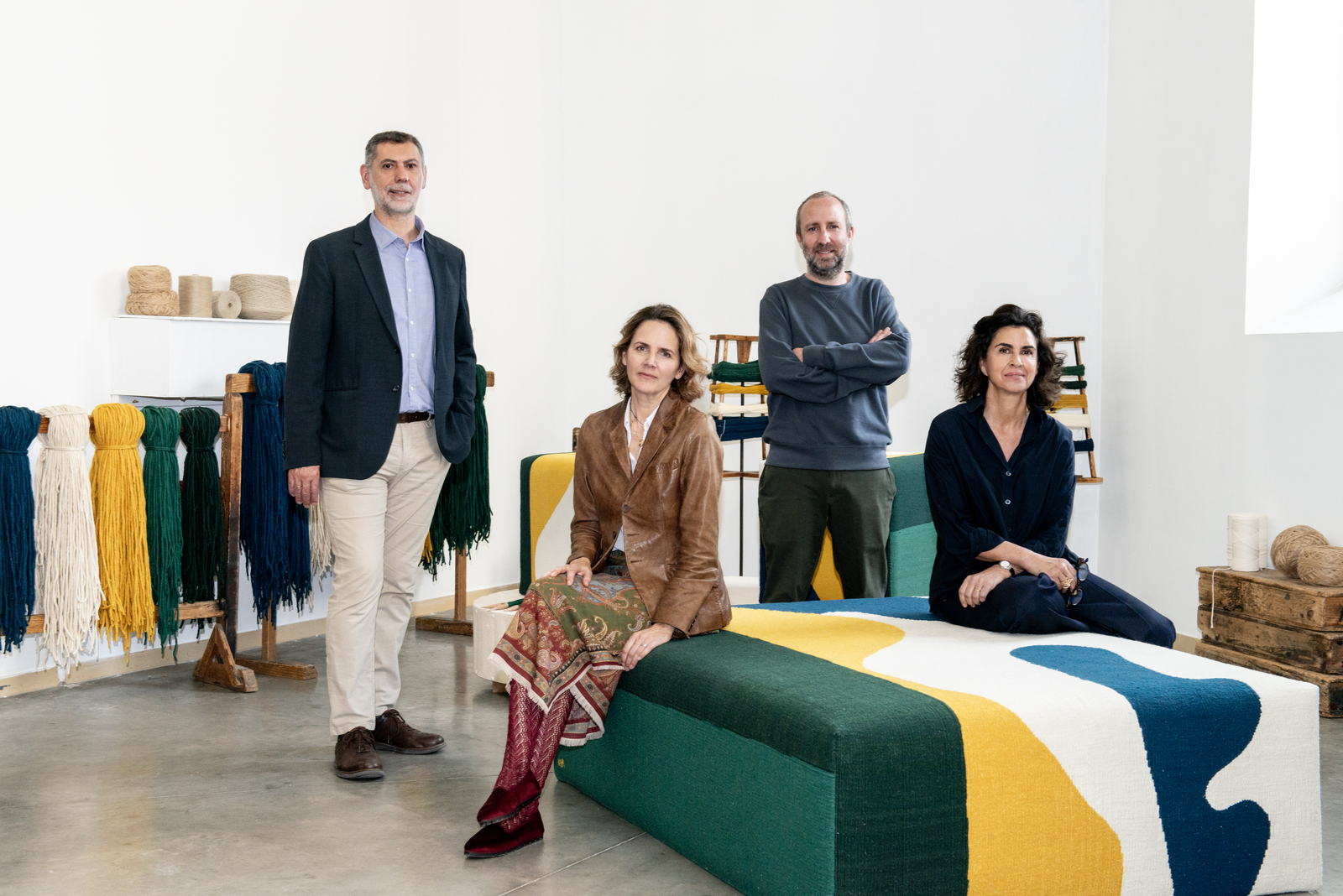
Is it the case of Alberto Simón that appears on your website?
For example, that is a very good case. Alberto embroidered before coming to ILOEMA, he was studying, worked in a workshop and had a teacher who was the one who introduced him to us and from that moment on we have worked with him. Now he has decided to work in a gold embroidery workshop because he wanted to specialize in it. But he is also fantastic at embroidering with other techniques he has learned.
What does the future hold for embroidery craftsmanship?
When we presented our latest artist collection, we talked a lot with Alejandro Klecker, RFT’s general manager, about this very thing. About who is going to take over, how to ensure that these techniques are not lost.
We live in a world in which there are textiles with embroidery that are sold and produced at very cheap prices that do not put in value the hours that are behind or that are directly made by machine, in countries with very cheap labor. That is why it is very important to tell the whole story of all the pieces that are made by hand (embroidery and tailoring), to recover the qualities of the fabrics, to bring a new chromatic range and adapt the iconography to today, as well as the uses of the textile pieces for the home.
On the other hand, when we made the first collection, Macarena Navarro-Reverter, a consultant specializing in contemporary Spanish crafts, asked us for Antonio Ballester Moreno’s tablecloth to exhibit it in an exhibition at the Madrid Design Festival. One of the things we are most proud of happened there: when the embroiderer, Raquel, showed it to her daughter, who is a surgeon, her work was highlighted. The daughter had always seen her mother embroidering since she was a child and now her mother’s work has been exhibited in a super gallery in Madrid, such as Maisterravalbuena, at the Madrid Design Festival…. Clearly it is a great satisfaction for us.
Has society’s idea of craftsmanship changed in the last five years?
It has changed because there are more and more voices telling the story of what it means to be a craftsman. Dissemination makes you value it much more, knowing what is behind each object, the perception changes a lot. And now it is told much more.
What are ILOEMA’s red lines?
For ILOEMA, the artisan has to work with qualities like those that were made 50 years ago because we believe that this is a first step towards valuing it more. We take care to do it on the best linen or material but try to update the pieces by applying the same iconography but with different colors, with less overloading, with a more modern ‘eye’.
What does this recovery of the classics consist of?
We use iconographies or drawings that are already in other places and the only thing we do is to transfer them, sometimes we isolate them so that we are able to appreciate what the drawing itself is. Instead of creating something motley, we try to see the essence and recover the qualities, try to update the same drawings, sometimes applying another chromatic range. Most of what we have done has been following these three lines and saying no to certain materials in the search for authenticity

Any series inspired by ceramics?
We made a tribute to the ceramics of Talavera and Puente del Arzobispo because there is a series of Talavera that is based on lace and is made in black, which is not so well known. In this way, we wanted to make the wink in reverse. We used the drawings, made tests and tests until we could see which ones looked better when applied to the embroidery. This resulted in a collection that was published in the New York Times, so we are very happy!
What are you working on now?
Now we have in mind what will be the next collection to recover the classics, we are working with a fantastic historical image bank and we are going to try to rescue it to make some pieces for home.
How is your support for training?
Now at the Royal Tapestry Factory we are funding a master lictor for a few months to learn and improve his level. We are also trying to teach embroidery to young people and there are two who are working to learn new techniques. We are now in contact with a Bangladeshi women’s association in Lavapiés. Since January we have been training ten women and some of them are going to start making our pieces.

What do you think about the creation of a degree in Toledo promoted by Castilla La Mancha?
They are giving a lot of support from the regional administration and that is always very good.
In other places they are trying to return to the theme of the guilds with an apprentice. Perhaps there should be a vocational school or each association or sector should offer specific training. For example, with respect to France or Germany, we are a little behind the times, even though people from abroad come to Spain to learn gold embroidery.
How many artisans are currently participating with you?
T: As we work to order, it varies quite a lot, but we usually have five people working with us to make some of the collections and then workshops such as Jesús Rosado’s for other collections.
S: It depends a lot, yes. At the Royal Tapestry Factory there are two or three people just to weave our pieces, or more with Jesús Rosado who has quite a large workshop, for other collections. Also with embroiderers. But we don’t have enough.
How do you appreciate the special nature of embroidery work?
One of the things that is sometimes difficult to assume is that embroidery and tailoring is something that takes time, immediacy does not exist and when we receive orders from outside Spain we are faced with quantities and times that imply a challenge for us. An Antonio’s tablecloth needs four months of work because they are more than three meters long and, in many cases, involve a large amount of embroidery. But whoever orders it, knows it. The poufs we have just presented are made in about three months, Blanca’s sculpture the same. What are not artist’s pieces depends on the quantity. We get orders from stores in London and Los Angeles.
Where are your pieces exhibited?
With SACo we have shown pieces in MDF, in Milan at Palazzo Litta on the occasion of the Salone Mobile, in what is called Fuori Salone. Right now, there are some in the Urso hotel in Madrid that has asked us to exhibit them also for two months… A very good showcase is Instagram in addition to the web and there are people who come to our showroom that is visited by appointment.
How are the pieces valued?
It depends, if it is a limited textile edition, there is the value of the production and also that of the artist. There is a very important part of the price that is the cost of producing it because it involves significant craftsmanship. For example, Blanca Muñoz’s pieces are made of expensive materials such as silver and silk. They are made in editions of eight copies, such as the large ottoman table by Antonio Ballester, and others up to twenty.
What is the price range of your products?
Between 120 and 11 thousand euros.
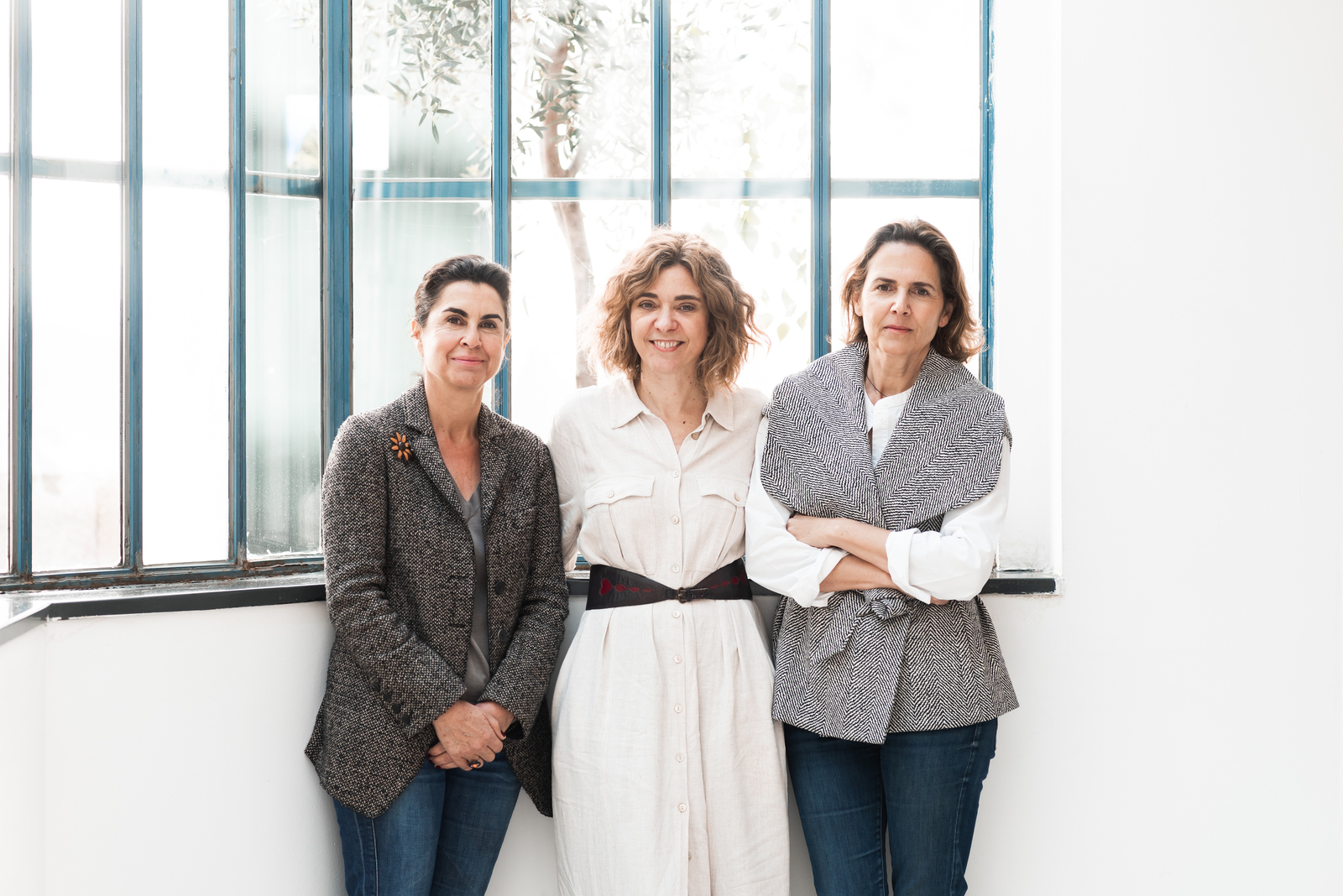
Editor: Beatriz Fabián
Beatriz is a journalist specialized in offline and online editorial content on design, architecture, interior design, art, gastronomy and lifestyle.
Photographer: Nieves Díaz.